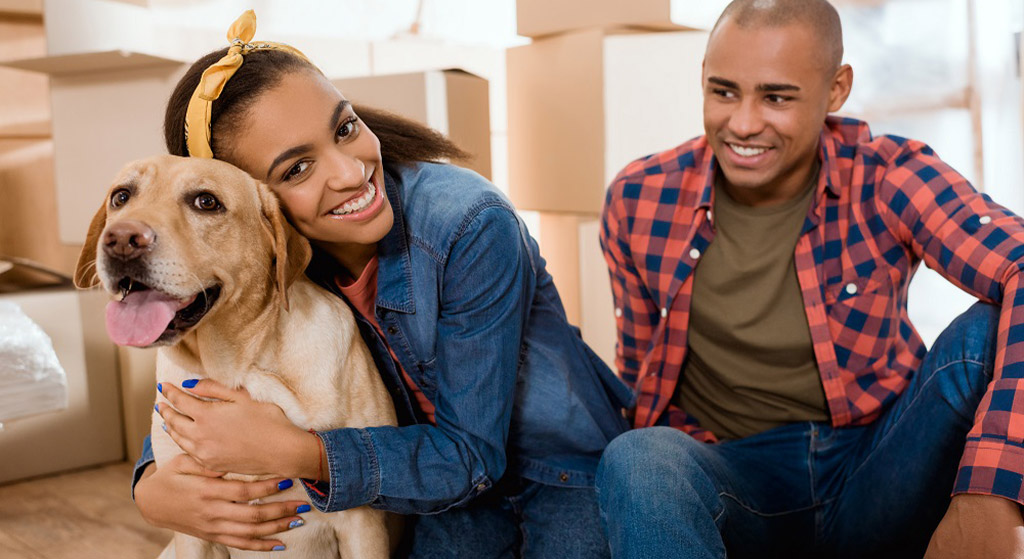
Keeping Your Feline & Canine Companions Safe During The Moving Process
Moving isn’t just a stressful time for people, it can be a difficult time for pets too. At least with humans you can explain to them verbally what’s going on, why the house is being packed up into boxes and why the whole family is relocating to a new place, but with pets, we unfortunately do not have that luxury of communication. In order to keep your furry companions as stress free as possible, there are various things you can do leading up to the move, during the move and after the move, to make the transition easier on them.
Take a look at our suggestions below for keeping things running smoothly during a move that involves pets.
Making Your Pets Comfortable During The Moving Process
The chaos of packing up all of your things in your home is not an environment that is agreeable to all pets. While some pets can adjust to the temporary chaos, others cannot and will be highly disturbed by the new atmosphere at home. When this is the case, you need to come up with a game plan.
On the day of the move, you should consider keeping your pet away from the mayhem at home. Board them at a dog/cat hotel, with their veterinarian, or with a friend or family member that they are comfortable with. Then, once all of the loading and in and out is done with, you can pick them up and get them ready for the next leg of the journey.
With all of the comings and goings into and out of the house, you also want to be careful that your pet doesn’t accidentally get out without your knowledge. This is another reason why housing your pet somewhere else while loading your things up is a good, and preventative, idea.
Keeping Your Pets Calm During The Move
There are assorted options when it comes to the logistics of getting your pet from Home A to Home B. You could drive to your new home with them in the car, or you can fly your pet to their destination. Each way has its positive aspects, and its negative aspects, but before we get into those, there’s something else important to touch upon first.
We cannot stress enough that if you’re going to be transporting your pet in a carrier, to start getting them accustomed to it well before the move occurs. By using positive reinforcements, like toys and treats, and placing the crate/carrier in a safe zone in the house, you can get your pet comfortable with what they will be traveling inside of. That way, once moving day comes, they won’t feel as panicked as they would if they were placed inside of a foreign container.
Now let’s look at the pluses and minuses of moving your pet by vehicle and by plane.
When you move your pet with you by car, you are able to be with them every step of the way. You don’t have to worry if they’re faring alright, without the knowledge if they are or not, like you would be if they were on a plane. Also, with the less than positive news that’s been coming out lately about what has happened to some pets while traveling via plane, you might not want to risk it. If you decide to go with driving with your pet, be sure to factor in extra time for breaks and secure pet-friendly accommodations if necessary.
The distance that you are moving is going to be a big decider on which route you go for your pet. By plane your pet will get to the destination quicker than they would driving, and for those pets who do not do well with long car rides, this might be the better option for them.
When transporting your pet via airplane, be sure to have everything that you need in order to have your pet flown done beforehand. Pets that travel in the cargo area of a plane must be placed in kennels that comply with the regulations put forth by the Agriculture Department and the International Air Transport Association. A health certificate and proof of vaccinations from your vet is also often required to fly your pet.
Getting Your Pets Acclimated To Their New Home
Getting used to living in a new place is a process for everyone, animals included. At this point you should have already checked with your new property manager (if renting) to make sure that pets are allowed, and researched nearby vets and boarding facilities for your animals. With that taken care of, it’s time to focus on helping your pet get acclimated to their new home.
The day you move in you should find a quiet room in your new place and settle your pet in there while the unloading and unpacking craziness is going on in the other parts of the house/apartment. Unpack their things and put them in that same room. Your pet will feel comforted by the familiar sights and smells associated with their things, like a bed, toys, litter box, etc. Put food and water in the room as well so they have everything that they need right there. As an extra precaution, hang a sign on the door letting people know not to enter this room or open the door.
Remember to be patient with your pet while they are getting used to their new home. They might display weird behaviors, hide more often than usual or act out in some way or another. Be reassuring and let them adjust at their own speed.
Some Other Quick Tips:
- Update your pet’s identification tags with your new address and phone number
- The same goes for microchips, you don’t want it being associated with a place you no longer live and a phone number you no longer use, so update that information
- Research where the nearest animal emergency care facility is in relation to your new home
- Double check that all of the screens on your windows are on and on snuggly before opening up the windows when the weather gets nicer to let a cool breeze in
- Keep your dog on a leash, or watch them very closely the first time you let them out into their new backyard. There might be holes in the fence you didn’t notice before, things out there that they shouldn’t get into, the back gate might not be latched correctly, etc.
- If you can, take a few days off of work right after moving to keep your pet company while adjusting to the new space. They will feel much better with you there

